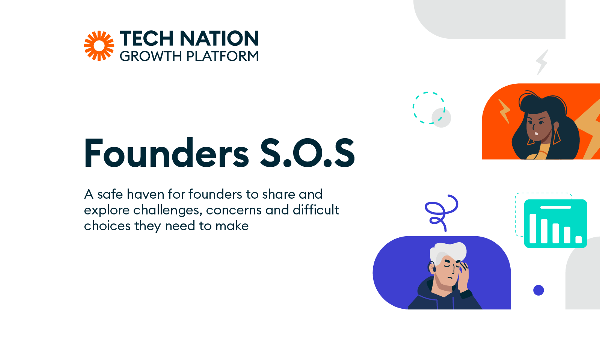Sales: How to Sell Tech Products

.
Selling can be a difficult task to begin with, and if your tech product is on the complicated side, then getting the concept across can sometimes feel like an impossible task.
This can be made even more difficult by the fact that your team might not yet be large enough to have its own sales department. For some burgeoning tech scaleups, the job of sales often falls to the founders and other generalist employees who are forced to wear several hats. And needing to sell when it’s not your speciality can be a frightening place to be.
So, first of all, you need to get the basics right. Once you’ve mastered those, you can start thinking about tech products specifically.
Know your product inside out
Before you even start to sell your tech product, you need to know how it works inside out. Potential customers are going to ask questions, and they won’t be filled with confidence if they are met with a look of puzzlement - if you don’t understand the product, how can they expect their customers or employees to?
Knowing your product like the back of your hand will also make it easier for you to ease your prospective clients’ pain points, and get ahead of any potential issues they might have.
Focus on benefits, not features
You might have a product with loads of cool features that perhaps you had a hand in developing, but listening to someone talk about a bunch of features doesn’t tend to set imagination alight.
Instead, you need to focus on the benefits of each feature. How does it save time? How does it save money? How does it streamline processes? Get yourself into the head of the user, think about their working day, or their day-to-day life - how does your product help them out or make their life easier? It will set their cogs whirring and allow them to picture their lives with your product in it.
Get good at storytelling
As the famous Maya Aneglou quote goes, ‘People will forget what you said, people will forget what you did, but people will never forget how you made them feel.’ The same can be said for selling. They might not remember when your company was founded, what the latest feature you added was, or where your HQ is, what people are interested in is what your product can do for their lives.
Reframe how you think about your product. It’s not about what your product can do, but about what the customer can do with your product. Think about what people want to do, and how your product can help them achieve that. Don’t try to sell products to people for things they can already do.
Get brainstorming about how your product will make your potential client’s life easier, better, more efficient, smoother - and try to inspire people when you’re talking to them. If they feel excited about what your product can do for them, the deal is as good as done.
Are you selling B2B or B2C?
Whether you're selling to a business or an individual will probably affect your selling technique.
If you’re B2C, you’ll speak directly to the consumer, while if it’s B2B, you might speak to a decision maker, not necessarily someone who will be the end user. The main point of difference is priorities.
B2C sellers need to put the consumer or the user at the centre of their narrative (not the product). Storytelling and empathy come into play. People want to buy a better version of themselves, not a product.
For B2B sellers, the potential clients have different priorities. Making the lives of their employees and/or customers easier and smoother will of course be vital too, as will things like cost, potential for savings - how will this product streamline their business? How will it upkeep their reputation as a business? Think of the business itself as the customer.
Decision making is another place where B2C and B2B differ. If you’re selling directly to the consumer, you’ll speak directly to the decision maker. If you’re selling B2B, the person you’re speaking to might have to consult their manager or their team before they make a choice, so you will need to cover a whole team’s worth of questions as opposed to just one person. The team might have a variety of buyer personas within it. So come prepared.
Get the numbers right
Although telling a story is key, you’ll also need evidence-based numbers to back it up, especially if you’re selling B2B. Calculate your ROI (return on investment) and back it up with data. Have the facts, figures and graphs ready to whip out if questioned, and you can’t go wrong.
Research your competitors
No matter how complex your tech product is, the chances are you have competitors out there offering something in the same ballpark. And if you want to be in with a chance of selling successfully, you need to know about them. Find out about your competition, and how your product matches up, and think about how your tech is positioned in the market.
Forget the jargon
If your tech product is already quite complicated, using a lot of tech jargon is probably going to make matters worse, and turn people off. Avoid it completely if possible, translating what you do into language everyone can understand. And if it can’t be avoided, use it sparingly.
Make transitioning easy
Introducing a new tech product can be a daunting idea, and one that some people or businesses might decide isn't worth the bother. To make a sale, you need to think long term, and help the customer see how smooth the transition will be. When you’re speaking to potential clients, talk about onboarding, and ongoing customer support. Don’t downplay their fears - on the contrary you might want to bring potential issues up first, so you can get ahead of them.
Ultimately, like in any sales scenario, preparation is key, no matter how complicated your product is.
To be the first to gain access to all Tech Nation content join our Growth Platform


